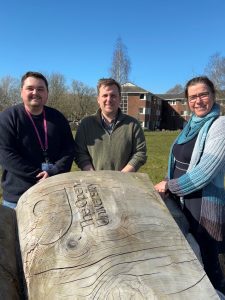
Dr Daniel Payne
Open University
Awarded: £139,540
The challenge
Sarcoma is usually treated with surgery, chemotherapy, and radiotherapy, but these treatments can have serious side effects and may not always work, especially for elderly patients and those with other underlying health conditions. A less invasive treatment option called photodynamic therapy (PDT) is already used for some skin cancers. It uses visible light and a special drug (called a photosensitiser) to kill cancer cells.
However, this treatment hasn’t yet been widely used in the clinic for sarcoma or many other cancer types, partly because it’s difficult to make the drug target cancer cells specifically. Currently, when used for other cancers, the drug goes to healthy and cancerous cells non-specifically, which means patients require higher doses for the treatment to be effective. The non-selective drugs also mean that some patients need to avoid daylight for several days, to prevent side effects and unwanted damage to healthy tissue.
How will this project tackle this challenge?
This project is developing a drug delivery system to help photodynamic therapy work more specifically for sarcoma. Instead of giving the drug directly, the researchers, in collaboration with Excellio Labs Ltd, will package it inside tiny natural particles called vesicles. These are produced by cells and are used to carry messages and substances between cells. They will engineer these vesicles to selectively target the sarcoma cells, protecting the surrounding healthy cells.
The team will grow different sarcoma cells in the lab and collect the vesicles the cells release. They will then load these with the photosensitiser drugs and test them in the lab to see if they can selectively target the sarcoma cells that the vesicles were isolated from. If the drug can be delivered to the sarcoma cancer cells specifically, and can only be activated by applying light, cancer cells can be targeted, meaning this method could reduce damage to healthy tissue and reduce off-target effects.
What this means for people affected by sarcoma
If this method is successful, it could be tested in larger pre-clinical models and, eventually, in clinical trials with patients. Due to their proximity to the skin’s surface, some sarcomas are well suited to photodynamic therapy. This project could lead to a new, effective, and less invasive treatment for sarcoma.












